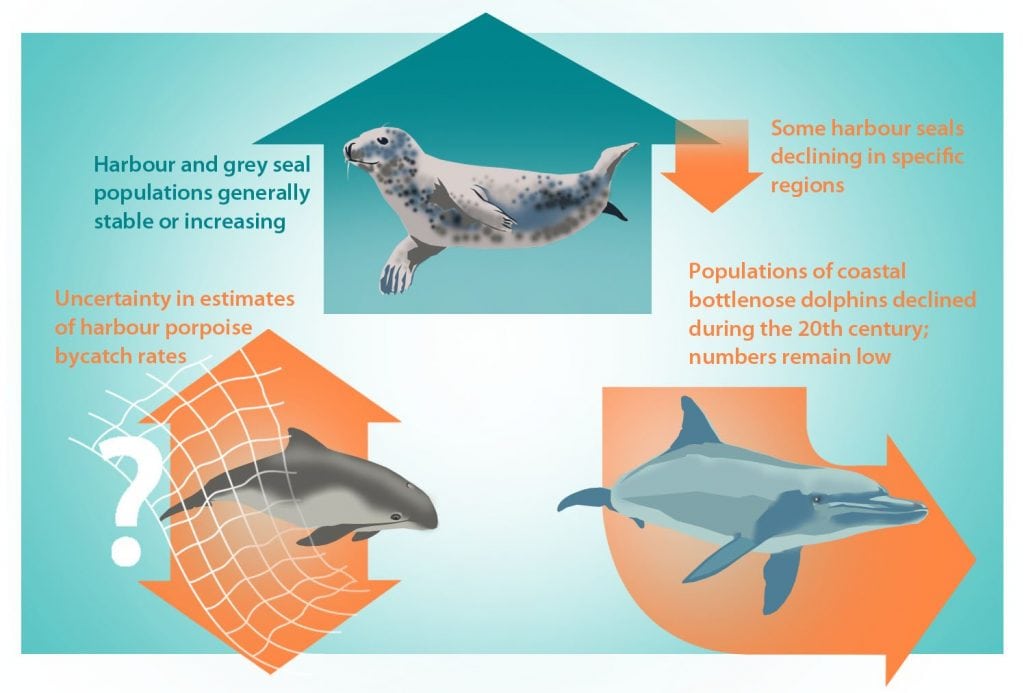Marine
IA2017 – Mixed signals for marine mammals
August 28, 2017 by Marine Scotland Communications No Comments | Category Collaborations, Marine Directorate general, Marine Directorate Science, Marine Directorate Surveys
The abundance and condition of marine mammals, as top predators, can help indicate the state of the marine ecosystem.
As was also the case at the time of the last OSPAR Quality Status Report (QSR 2010), harbour seal and grey seal populations are generally stable or increasing in most assessed areas although some harbour seal populations are declining in specific regions. In contrast, populations of coastal bottlenose dolphin declined during the 19th and 20th centuries, and numbers have remained low but stable into the 21st century in some areas.
By-catch of harbour porpoise is considered one of the main human pressures on this species. However, there are high levels of uncertainty in estimates of harbour porpoise by-catch rates.
As relatively long-lived species, understanding trends in cetacean populations requires long time series on a large scale. In the future, OSPAR aims to combine pressure assessments (e.g. noise and contaminants) with impacts on marine mammals.
Tags: Defra, environment, JNCC, north east atlantic, OSPAR, SEPA



Leave a comment